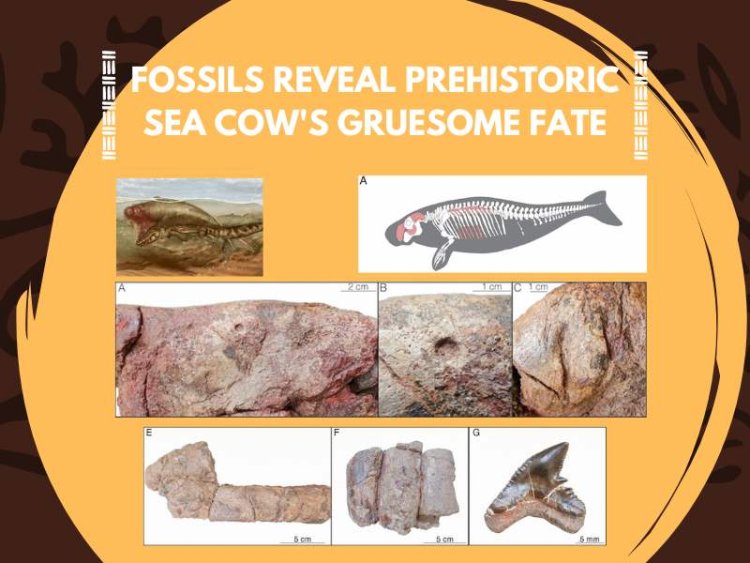Ancient sea cow was attacked by a crocodile and sharks
Discover prehistoric sea cow fossils in Venezuela that reveal a crocodile attack and shark scavenging from 11.6 to 23 million years ago. Learn about this rare insight into ancient predator-prey dynamics and the Miocene food chain.

Fossils Reveal Prehistoric Sea Cow's Gruesome Fate: Attacked by a Crocodile, Scavenged by Sharks
A remarkable discovery of prehistoric sea cow fossils sheds light on a violent episode that occurred 11.6 to 23 million years ago during the Miocene Epoch. These fossils, found in what is now Venezuela, reveal that the sea cow fell victim to a crocodile attack and was later scavenged by sharks, offering a rare glimpse into ancient predator-prey interactions.
Multiple Predators Target the Same Prey
The sea cow's bones show clear evidence of bite marks from two different predators—a crocodile and sharks. This unusual find demonstrates that multiple predators fed on the same prey, a rare occurrence in the fossil record. The discovery was published in the Journal of Vertebrate Paleontology on August 28, 2024, providing critical insights into ancient food chains.
Reconstructing the Sea Cow's Final Moments
The fossils include a partial skull, vertebrae, and ribs, each showing distinct bite marks that allow scientists to piece together the sea cow's tragic fate. Deep tooth marks on the animal's snout suggest a crocodile attacked it, possibly to suffocate the sea cow by grabbing its snout. Further evidence shows that the crocodile likely dragged the animal before tearing into its flesh.
Later, sharks, including a tiger shark identified by a tooth found near the sea cow's neck, scavenged the remains. Their bite marks appear as long grooves with triangular cross-sections, indicating that they tore flesh from the carcass.
Insights Into Ancient Ecosystems
This discovery offers a rare snapshot of an ancient marine ecosystem. The lead author of the study, Aldo Benites Palomino from the University of Zurich, highlighted the importance of these findings, stating, "Fossil records of multiple predators feeding on the same prey are scarce. This discovery emphasizes the crucial role sea cows played in ancient food chains."
The interactions seen in this fossilized event reflect modern ecosystems where predators often scavenge each other's kills. However, documenting such behavior in fossils is rare, making this find particularly valuable.
Unearthing the Fossils in Venezuela
The fossils were uncovered near Coro, a city in northwestern Venezuela, thanks to a local farmer who first noticed unusual rocks. Excavation of the site required multiple visits and careful extraction techniques, as the sea cow's skeleton was embedded in fine sediments that helped preserve the fossil's hard outer layer. The team spent several months restoring the fossils, which provided an exceptionally detailed look at the bite marks left by the crocodile and sharks.
Crocodile and Shark Bite Evidence
The bite marks on the sea cow's skull, especially around the snout, were shallow punctures indicative of a crocodile’s teeth. Some of the marks were deeper, with dragging effects that suggested violent tearing. Shark bite marks, identified by long grooves in the ribs, were linked to scavenging behavior. The presence of a tiger shark tooth near the neck further confirmed that sharks fed on the sea cow's remains after the crocodile's initial attack.
Conclusion
The discovery of these fossils paints a vivid picture of life in the Miocene seas. The sea cow’s remains not only reveal the harsh realities of prehistoric predator-prey dynamics but also offer a rare glimpse into ancient food chains. This find adds valuable knowledge to our understanding of how marine ecosystems functioned millions of years ago, much like they do today.
Sources:
- Journal of Vertebrate Paleontology
- Taylor & Francis Group
- Science Daily
What's Your Reaction?
















